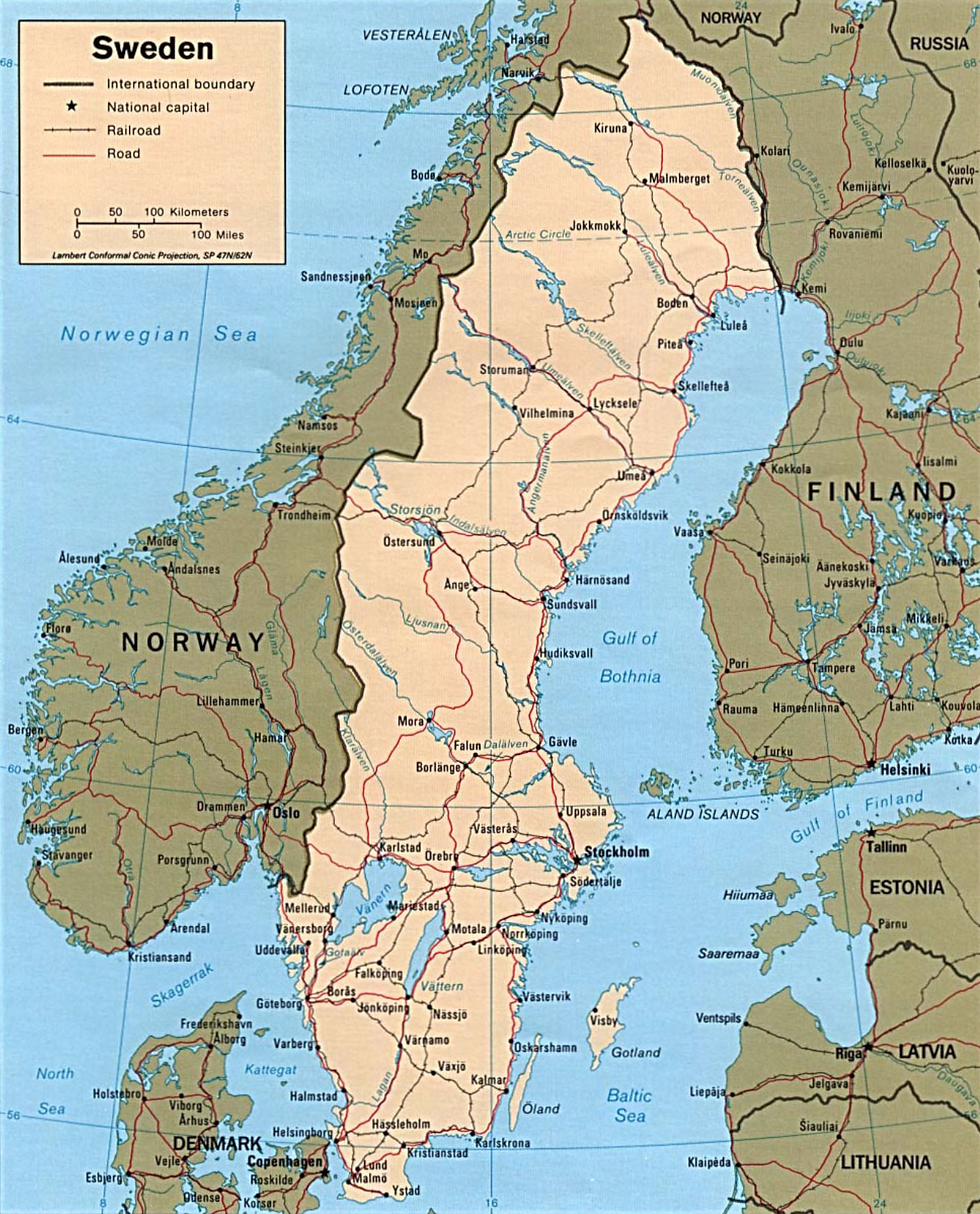The Swedish Way
- Mark L. Johnson

- Aug 6
- 4 min read

Shirley and I are just back from a month-long trip to Sweden. The primary purpose of the trip was to finalize my ancestry research and visit all the towns, parishes and kyrkas (churches) were my great grandparents and other ancestors lived and worked prior to their immigration to America in the late 1800's.
We rented a traditional Swedish cottage in a forest near a lake in central Sweden which was our base camp. We traveled extensively from there throughout central and northern Sweden and took some side trips via train and ferry to Stockholm, Finland and Norway.
The vast majority of the land in Sweden consists of farms, lakes and forests that have been preserved and protected over the years. We hiked frequently in the forests, nature reserves, national parks and along the lakes. The country-side outside the cities and town centrum looks essentially as it did when my relatives left Sweden in the late 1800's. See photos below.


Q: Why did they leave this beautiful country?
A: In the late 1800's there was no work, no food and some disease (cholera). They had no choice but to go to a place that offered a better future. My Swedish ancestors were iron workers and immigrated to Worcester, MA where there were several steel mills that provided these skilled workers great jobs and a better life.
Another purpose of the trip was to examine the current state of the Swedish environment and way of life. I can report that Sweden is beautiful, clean, preserved and protected. We observed the following on our travels in Sweden:
Land
Comparatives
Sweden (450,295 square kilometers[km]) is only 12% larger than California (403,882 square km).
Sweden population (10.5 million) is only 28% of California's population (37.3 million)!
No more stats needed!
Land Use (1)
Zoning occurs at the Municipal level (290 municipalities) and not by Region (21 regions) nor the national government (1).
Zoning is totally integrated with Preservation (cultural & historical) and the Swedish Environmental Code. It is an unfragemented, holistic process.
Land Use Restrictions are strong and require identification and preservation of protected areas. These areas include national parks, nature reserves, and other ecologically sensitive land, which are designated to safeguard biodiversity and protect natural resources.
Home Construction/Sales
No new homes or subdivisions were seen under construction.
No real estate signs were seen.
Most homes, cottages, barns, etc. have retained their historic external structure and traditional red color while the interior of many buildings have been modernized.
Environmental Creed
Recycling is a way of life, e.g. plastic bottle caps remain attached to the bottle after opening, all paper cups have paper covers (no plastic), etc.
No litter seen anywhere.
Electric vehicles are encouraged and there are plenty of charging stations throughout Sweden.
Renewable energy via wind, hydro, bio-mass, etc. are utilized throughout to meet fossil fuel emission goals.
Outdoor recreation is prevalent during all seasons with hiking and backpacking in the summer and cross country and downhill skiing in the winter. The National Parks are beautiful with modest visitor centers. The forest floor has a foot or more of peat, moss and lichen which is very soft. Accordingly, the groomed hard pan trails are required.
Transportation
Roads-Traffic Safety-Fuel Conservation [traveled 3,000 miles by car and did not see one vehicle accident and only one police vehicle on the highway]
2+1Highway design.
Road Narrowing, Roundabouts & Choke Points used in all road/highway design.
Maximum Highway Speed Limit = 120 km/hour (74 mph) but normal is 80 km/hour (50 mph) to 90 km/hour (56 mph).
City/Town Speed Limit = 40 km/hour (25 mph) to 60 km/hour (37 mph).
Speed Cameras used extensively to control speed.
Trains [traveled 665 miles by train]
Sweden has one major state-owned rail company (SJ AB) that handles about 30% of passenger rail traffic. The remaining 70% is handled by deregulated regional transportation authorities that include private rail companies.
Reservations are easily obtained online with apps like Omio, Rail Ninja or the individual rail company app.
All trains were clean, comfortable and on-time.
Ferry[traveled 500 miles by ferry]
Ferry service with car transport is available in Sweden with service to Denmark, Norway and Finland.
Reservations are easily obtained online with apps like Omio or the individual ferry company.
All ferries were clean, comfortable and on-time.
Air [traveled 12,400 mile by air]
Delta-Phoenix to JFK (5 hours) and JFK to Arlanda (Stockholm) (8 hours)-recommend the premium seats!
Did take short flight from Oslo to Bergen on Norwegian Airlines.
Convenient trains to and from Stockholm and Oslo airports to centrum.
Both terminals are very nice and Arlanda (Stockholm) had lots of comforting security throughout.
Water
Lakes-97,500 with surface area greater than 2 acres
Gulf of Bothnia (east coast-north between Sweden & Finland)
Baltic Sea (east coast south of Gulf of Bothnia, south coast and west coast)
Except in the larger cities, there are no housing developments located along the shores of the lakes. Only an occasional farmhouse or cottage.
All water bodies were generally clean but do get some pollution from acid rain, over-fishing (sea), shipwreck pollution (sea) and some contaminated runoff.
Animals & Plants
There are many animals and plants similar to those found in New England and the Northwest portions of the United States and even some that we see here in Arizona. Below is a photo collage of some of the animals and plants we saw on our hikes in Sweden. No javelina but we did see moose!
You can get more information on these species by going to the iNaturalist app and search under Projects for Sweden-Finland-Norway.
Conclusion
Sweden is beautiful, clean, preserved and protected. Sweden's environmental creed, land use protections and transportation systems are a great example of what can be done to protect a nation's environment and way of life for future generations.
Tack och ha en bra dag!
(Thanks and have a great day!)




















































